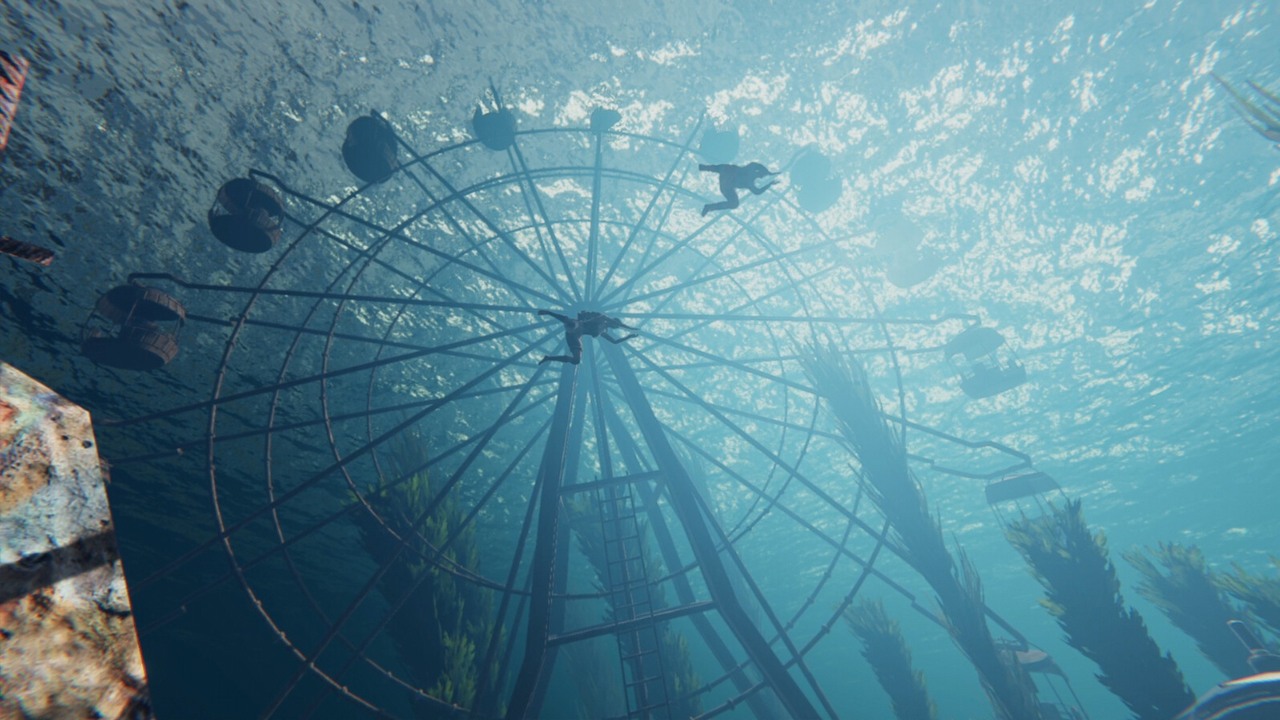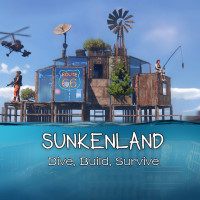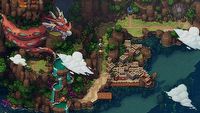Sunkenland Guide - Tips for Beginners
Are you unsure how to survive your first night in Sunkenland? In our guide, you will find useful tips for beginners.
1

Sunkenland is a survival game in which players must survive in a world almost entirely submerged. Gathering needed resources or getting food can be tough, especially for newbies. That's why we compile the best tips for beginners in our guide. If you want to find out the proper way to start your adventure with this title, you've come to the right place.
Tips for beginners in Sunkenland
- Build with scrapped metal - this material is available in the first island you spawn, and is much more durable than standard wood. What's more, you'll then save your wood supplies for much more important activities like cooking and water purification. Scavenge the rusty old cars that are under the water to get the metal.
- Don't swim at night - when it starts to get dark, the temperature both on the surface and in the water will drop drastically, making you start to freeze. It's a much better idea to do underwater expeditions during the day, while at night you take care of expanding your base or preparing meals.
- Craft the Diving Fins – it will allow you to move faster in the water, which means you will explore quicker and potentially collect more materials with the same supply of oxygen.
- Build a provisional base - the first night can be tough, so it's a good idea to make a basic base that consists of a few walls and a floor as soon as possible. This will allow you to place important items like a simple purifier, a grill or a standing torch so you won't freeze.
- Gather everything from the starting island - clearing it of wood and other seeming junk will allow you to build basic things. What's more, it's also a good idea to dive into the water and look for scrap metal or crates that contain additional components.
- Build the markers - the markers will make it much easier for you to find important locations that you will want to revisit later. You can change the color of the flags to better signal to yourself and your fellow players the area to which they are walking or swimming. For example, a green flag can indicate that the area is your base or safe zone.
Sunkenland Guide
- Iron – this is one of the most important resources. In this guide we will tell you how to get it.
- Cotton – many players have problems with finding it. If you are one of them, read our guide.
1

Author: Dawid Lubczynski
He completed his first degree studies in journalism. His adventure with Gamepressure began in 2019 when he undertook the difficult art of writing complex game guides. Over the years, became a specialist genre; in his spare time, he reads about mixtures that will help him reduce stress after the thousandth death at the same stage of the game. A huge fan of fighting games (Tekken) who regularly participates in tournaments.
Latest News
- My experience attending the 2025 Game Awards, and why I loved it
- Larian CEO Swen Vincke responds to generative AI backlash from fans
- “This guy copied my video WORD FOR WORD.” A YouTuber claims his video was fully duplicated
- Is Roblox shutting down on January 1? The rumor is back again, but let’s take a look at whether there’s any truth to it this time
- Studio responsible for GTA 6 is in serious trouble. British government announces investigation against Rockstar after controversial layoffs


